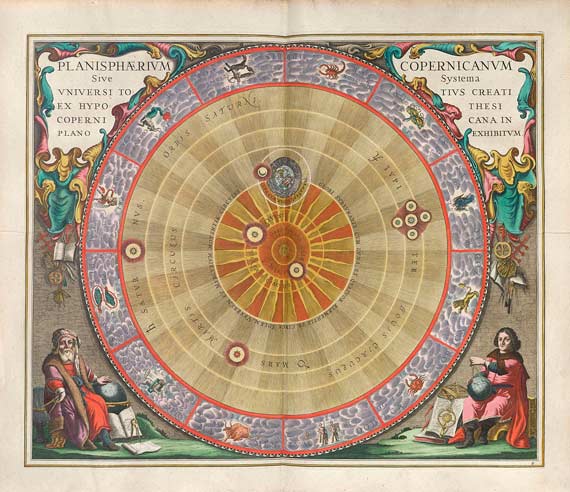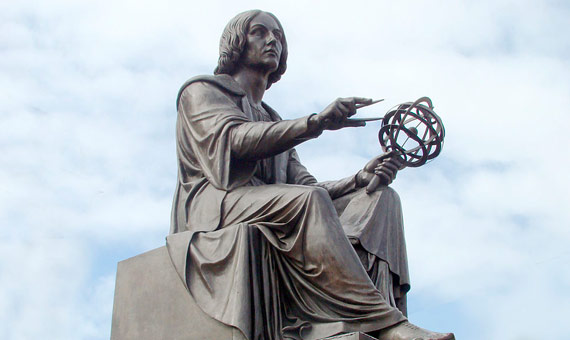The sages had placed the Earth at the centre of the universe for nearly two thousand years until Copernicus arrived on the scene and let it spin like a top around the Sun, as we know it today. It is said that on his deathbed, this Polish clergyman was finally able to see his book printed, the labour to which he had dedicated half his life: De revolutionibus (On the revolutions of the celestial orbs). Nicholas Copernicus (19 February 1473 – 24 May 1543) was not the first to explain that everything revolves around the Sun, but he did it so thoroughly, in that book, that he initiated a scientific revolution against the universal order established by the greatest scholar ever known, the Greek philosopher Aristotle.

Aristotle said in the fourth century BC that a mystical force moved the Sun and the planets in perfect circles around the Earth. Although this was much to the taste of the Church, in order to fit this idea with the strange movements of the planets seen in the sky, astronomers had to resort to the mathematical juggling that another Greek, Ptolemy, invented in the second century AD. Thus Copernicus started to look for something simpler, almost at the same time that Michelangelo undertook another great project, that of decorating the ceiling of the Sistine Chapel.

Copernicus had a full Renaissance résumé: studies in medicine, art, mathematics, canon law and philosophy; experience as an economist and a diplomat; and also a good position as an ecclesiastical official. But his greatest passion was astronomy. He had discovered it while studying at the best universities in Italy, which were then buzzing with new ideas that constantly surfaced… one of his professors even dared to doubt Aristotle’s theories. Returning to his quiet life in Poland, Copernicus set out to observe the sky. By 1514, he had already written a sketch of his theory, although he did not publish it for fear of being condemned as a heretic and also because he was a perfectionist. He spent 15 more years repeating his calculations, diagrams and observations with the naked eye, prior to the invention of the telescope.
The Solar System like an athletics track
He could see that sometimes appearances deceive: that if we see the Sun (and the starry sky) rotate, this is in fact due to the daily rotation of the Earth itself; that if the Sun repeats its path each year, crossing the constellations of the zodiac, this is caused by the movement of the Earth around the star; that if the planets make strange dances in the sky, it is because we are seeing them revolve around the Sun from the perspective of another planet in motion. Copernicus was the first to recite them in order: Mercury, Venus, Earth, Mars, Jupiter and Saturn, the 6 planets that were then known. Travelling along its fixed course, as if the Solar System were an athletics track, the Earth goes faster than the planets of the outer lanes and each year it gains a lap. During the months of overtaking, we get the feeling that the other planet is slowing down, then reversing, before moving forward again when we leave it behind, as happens when we overtake another car on the road.

When Copernicus finally decided to publish his theory, the book’s publisher softened it in the prologue: he said that there were “only easier mathematics” for predicting the movements of the planets, and not a whole new way of looking at the reality of the universe. But this was understood as a challenge to Aristotle, to the Church, and to common sense. If the Earth moves and rotates so fast, why do things fall straight and not follow a curve? And why are we not thrown into space? We would have to wait for Kepler, Galileo and Newton to answer these questions. It would be 150 years before the Copernican revolution triumphed, and the world finally admitted that the Earth was just one more spinning top.
Comments on this publication